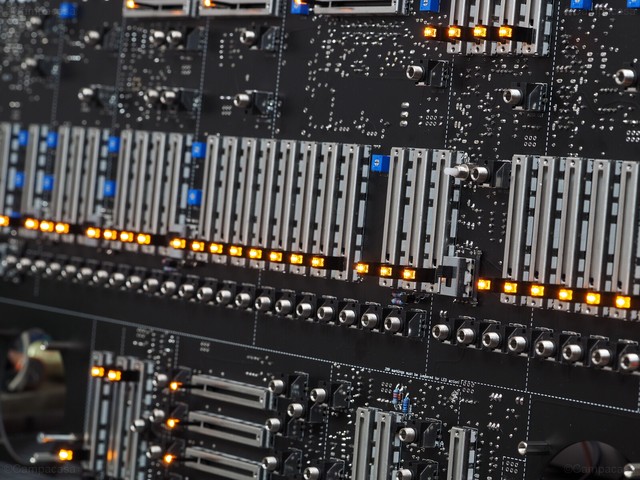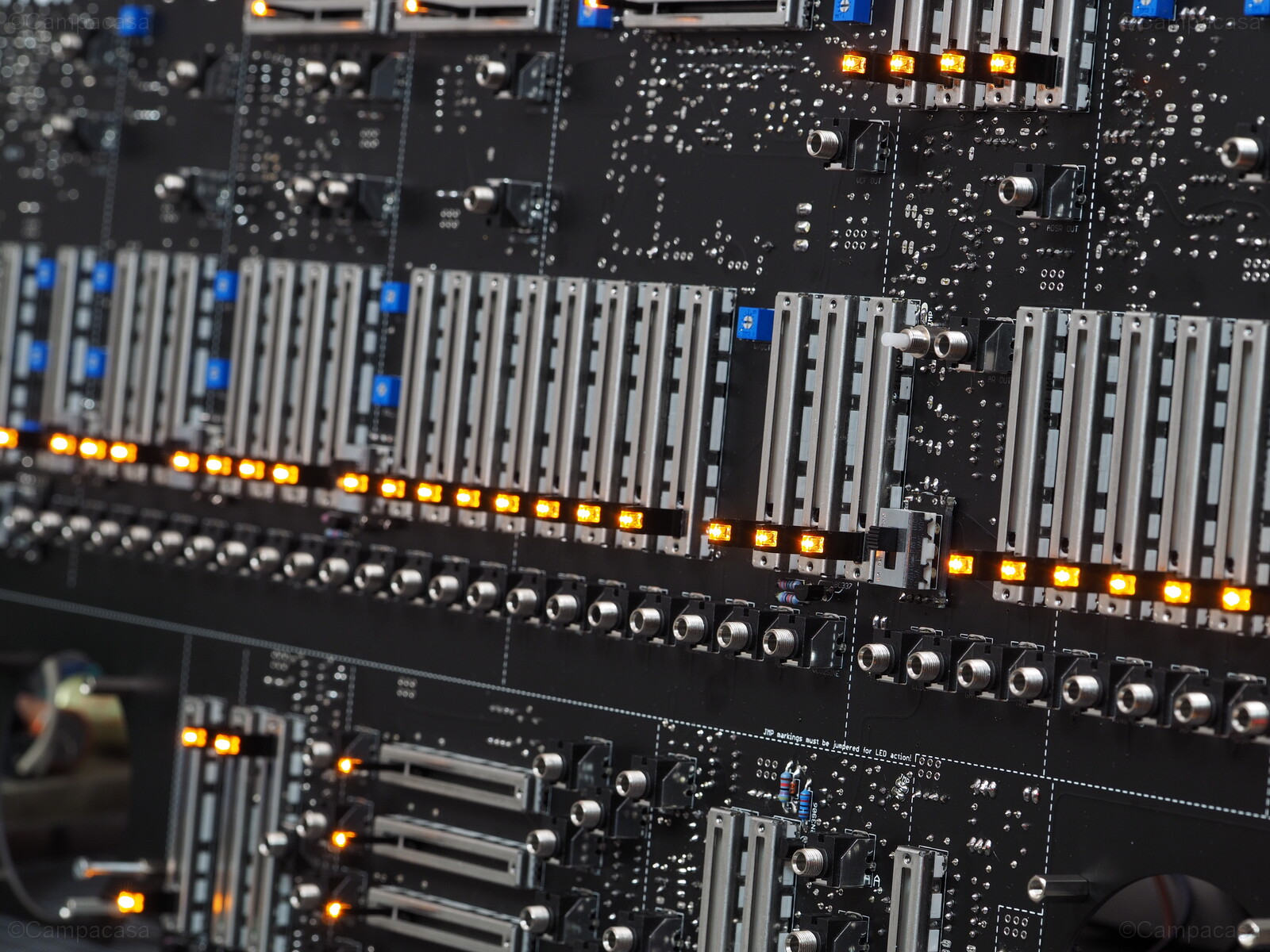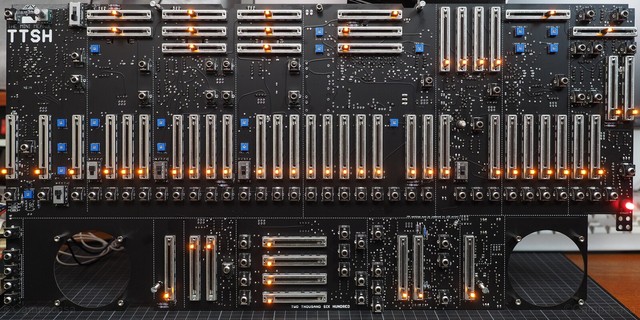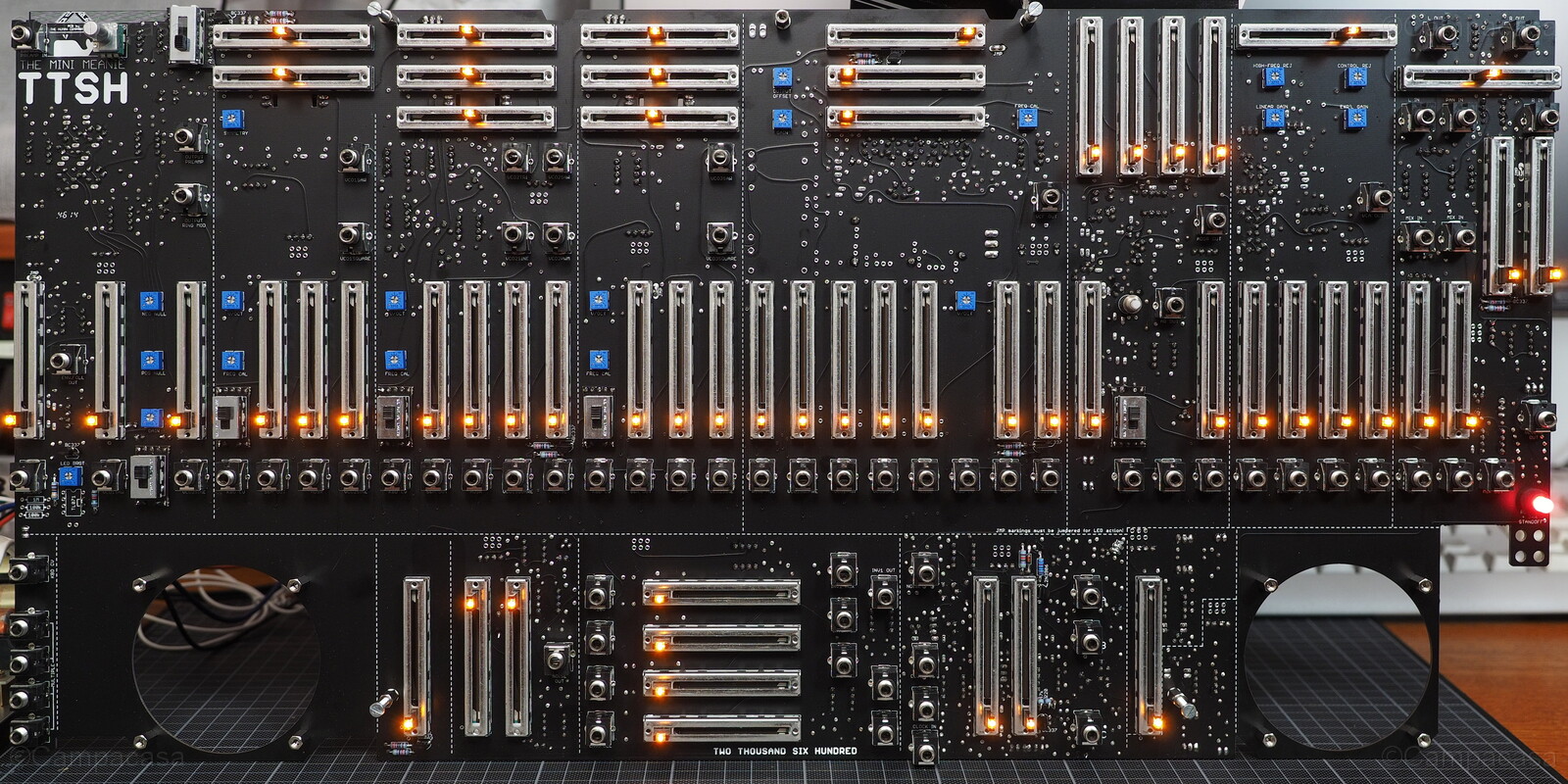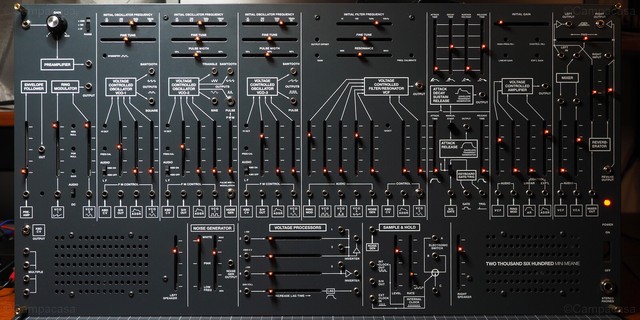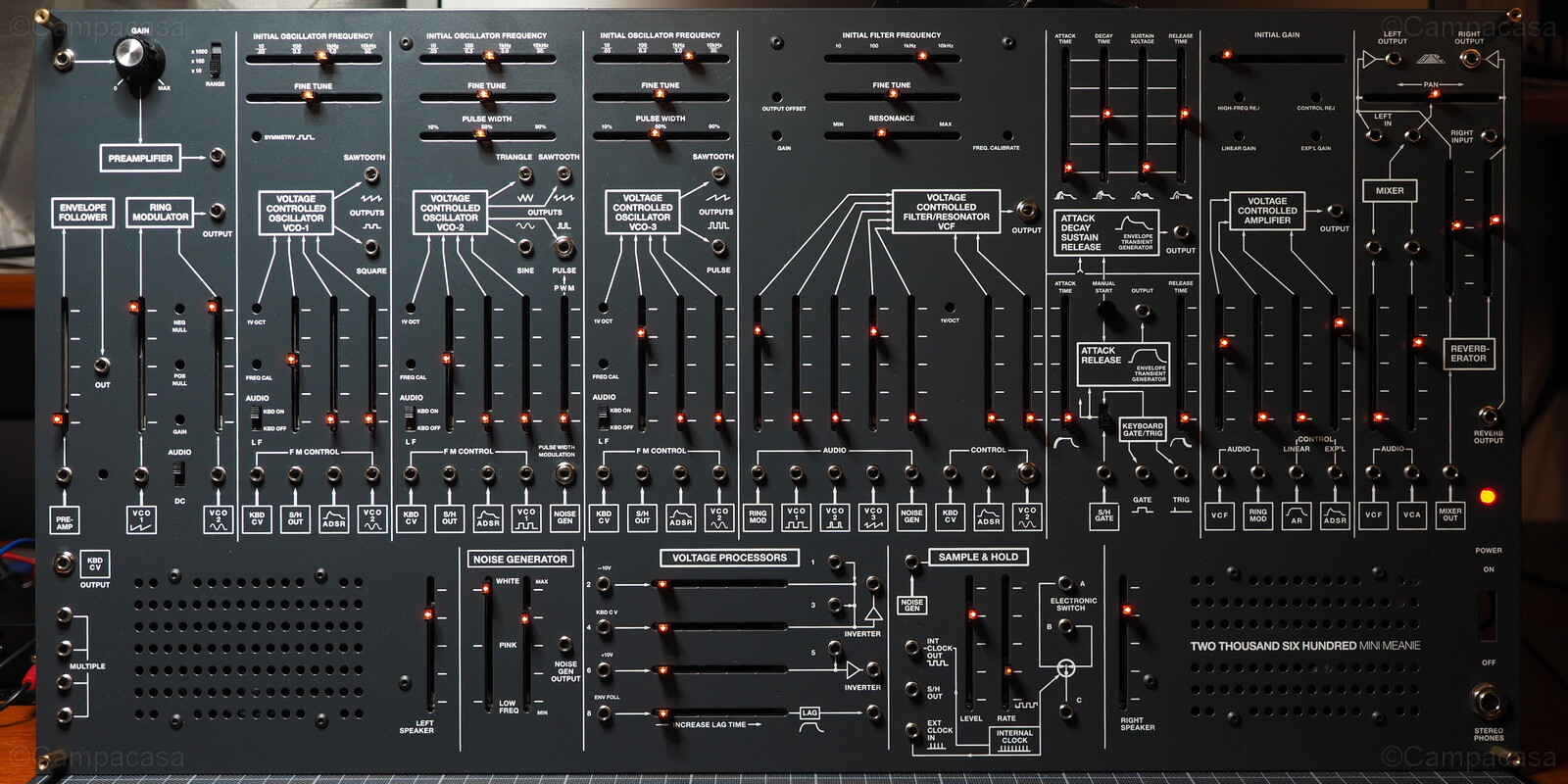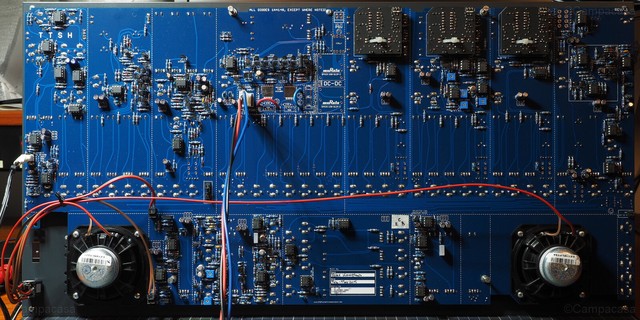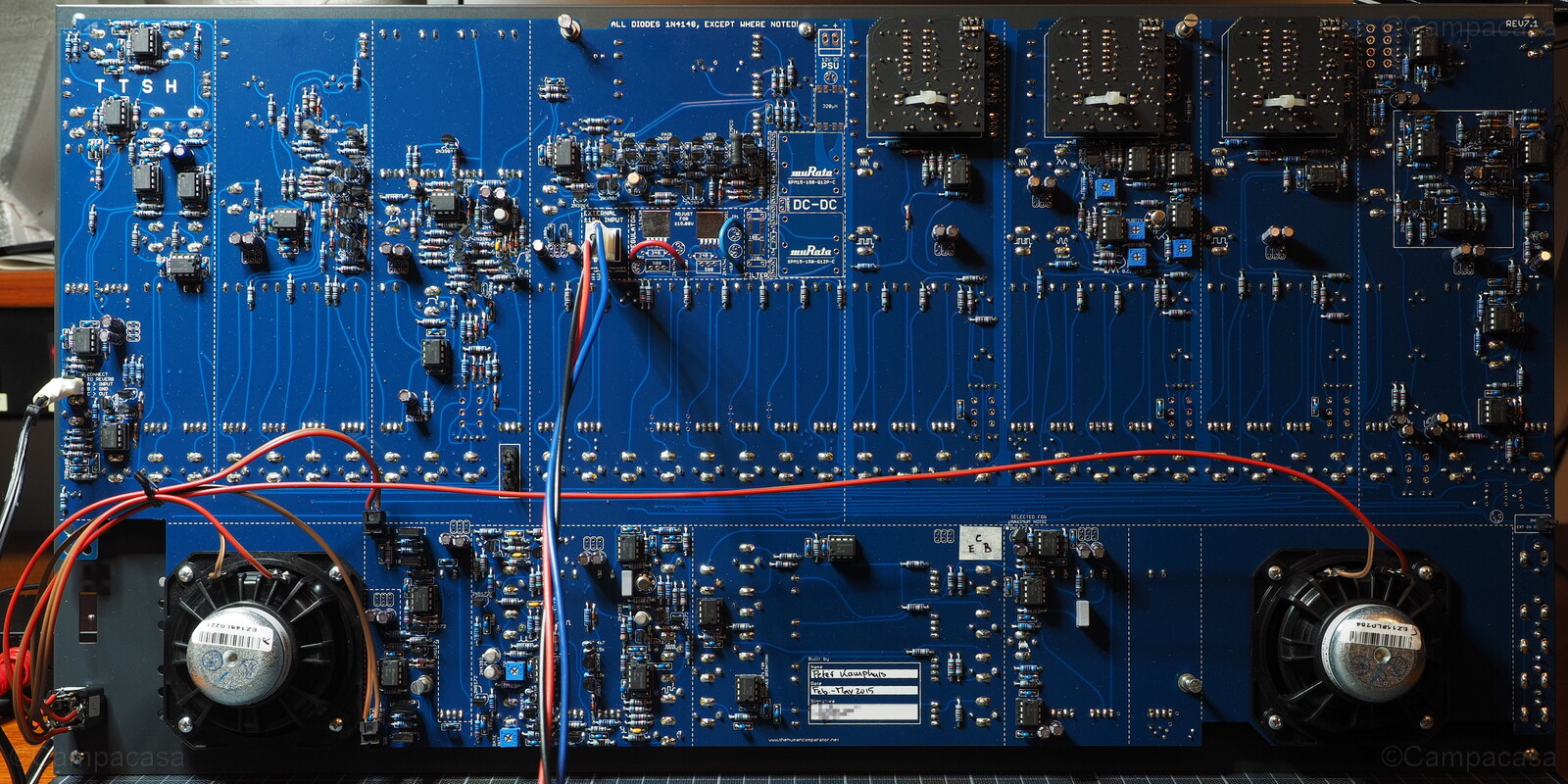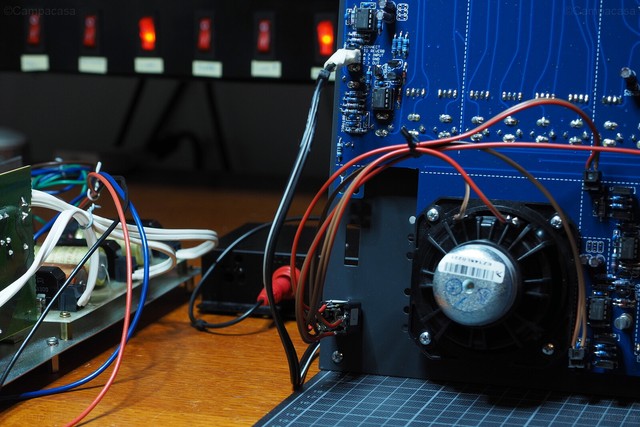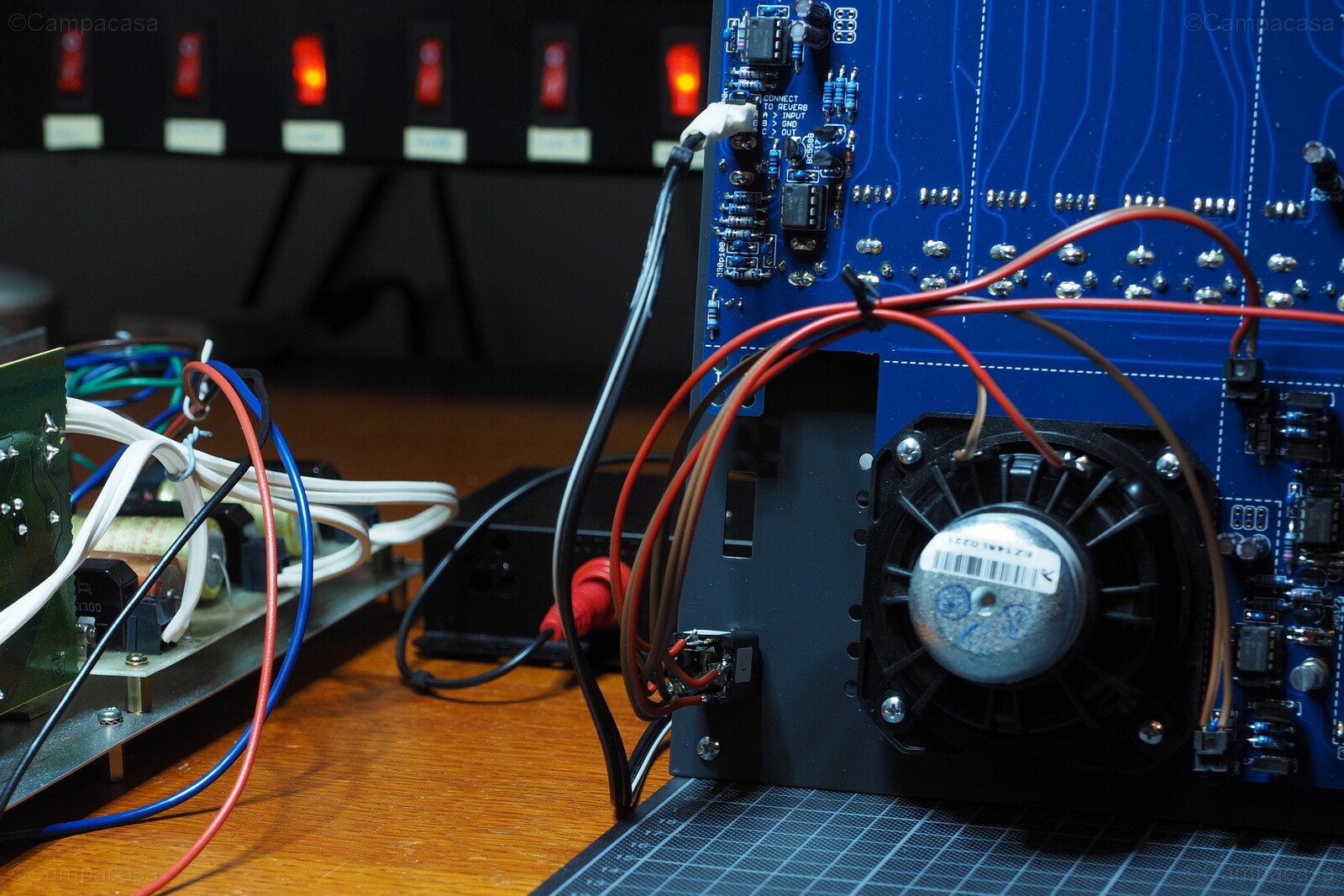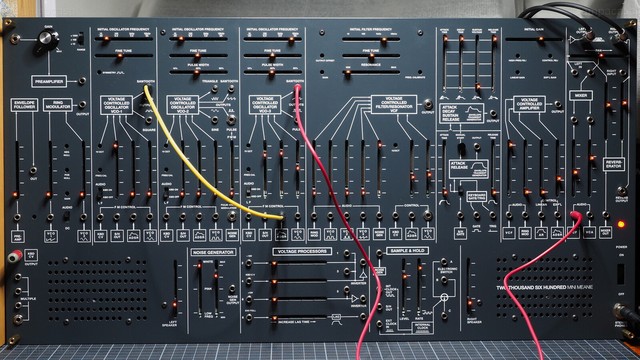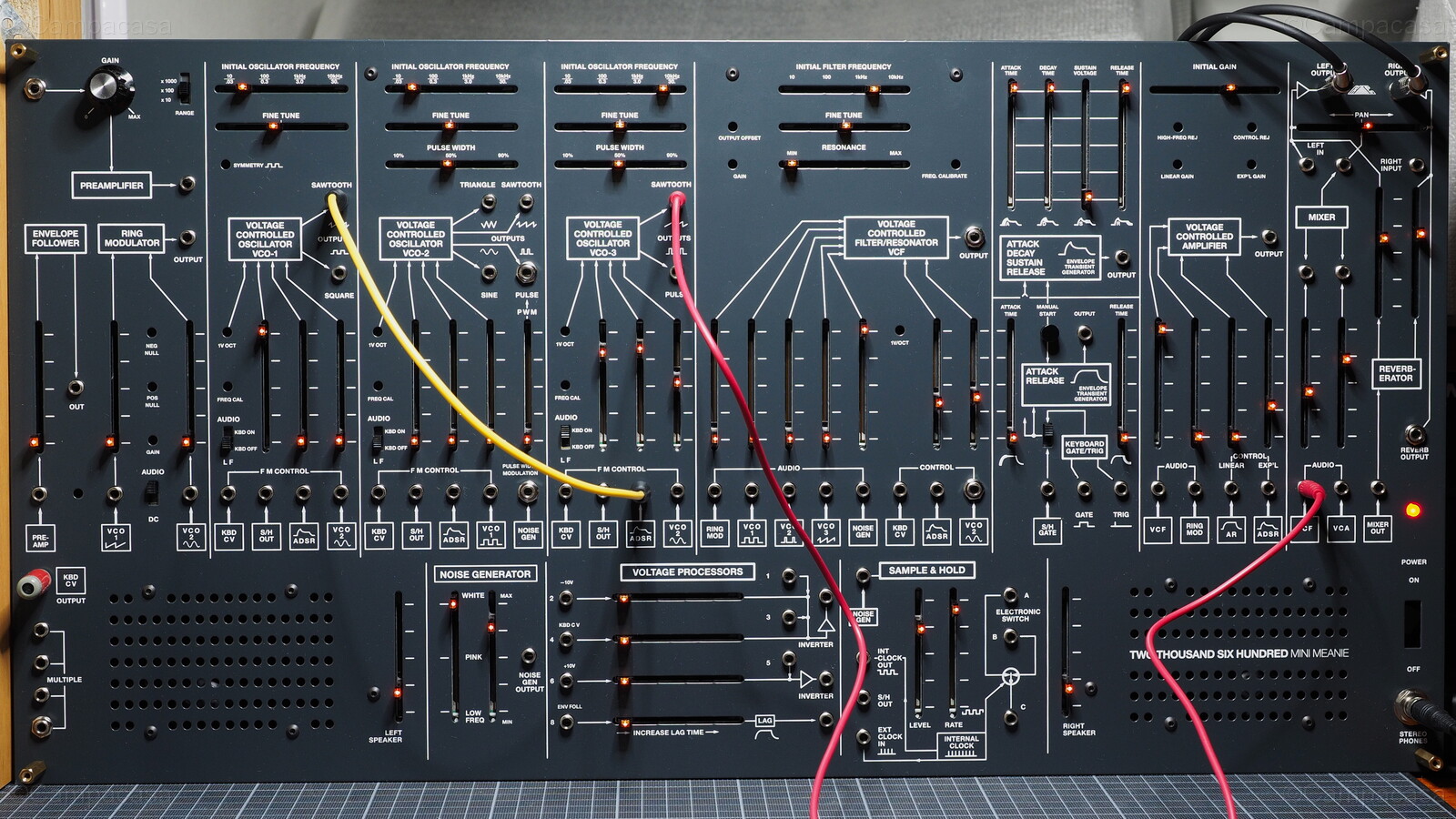Now that the complete board is done, I could perform a first test. This covers VCO 1, 2 and 3, VCF, ADSR, AR, VCA, noise and sample&hold. At first all seemed to be working, but then I noticed two defects:
- One of the VCOs generated a way too high frequency compared to the others.
- The fine tuning of VCO 3 didn't have any effect.
It turned out that I had two bad soldering points: The 680pF capacitor on one of the VCO boards was loose on one end. And, the same was true for the 3.3MΩ resistor connected to the fine tuning slider of VCO 3. Correctly soldering both points luckily fixed this.
Here are two pictures of the main board functioning:
Mounting the front panel already gives a good feeling of how the TTSH will be:
Installing and connecting the speakers and spring reverb will allow standalone use:
Next I can work on calibrating the system and doing several more testing. Last but not least I'll need to start working on a case.
And here's a first little noisy trial, which I call “At the Sea”, using a patch as shown:
Patch: At the Sea
Slowly rising VCO3 volume into mixer (VCF input) for the tingling, high frequency sound. Pushing manual trigger button from time to time to emphasize the wavy noise sound.
Listen to “At the Sea”:

